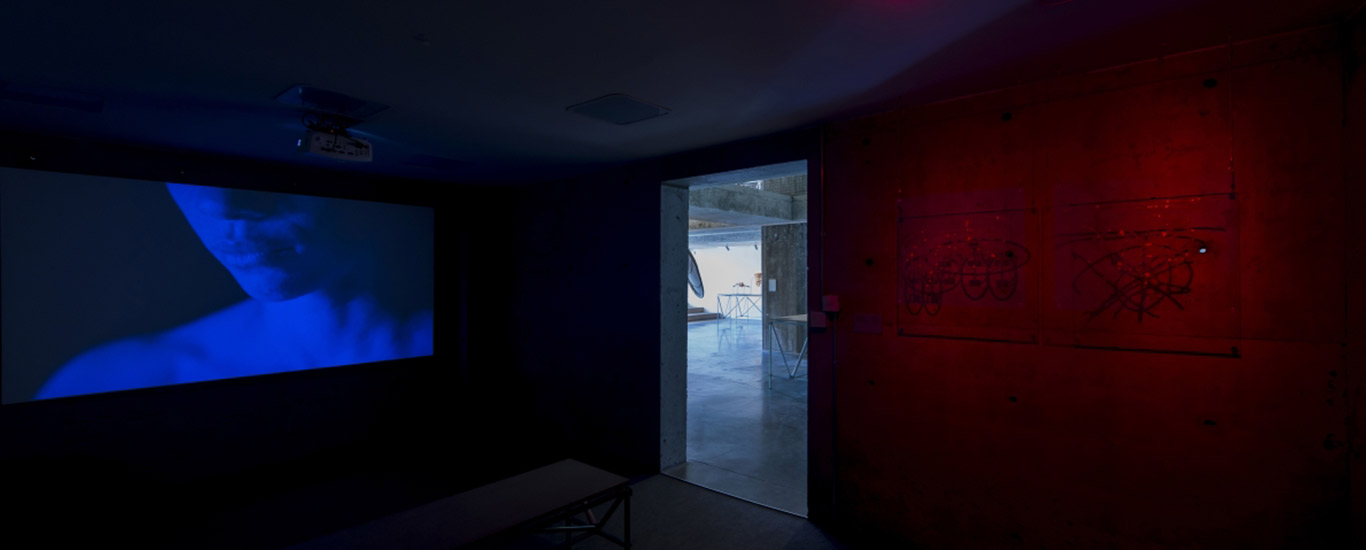By Gabrielle Kennedy
Artist Jenna Sutela’s research with slime mould delves deep into the notion of consciousness – that indescribable perception beknown to life that’s still little understood. For A School of Schools she is showing two labyrinths she designed for slime mould and Holobiont, a video that explores the idea of embodied cognition on a planetary scale. It zooms from outer space to inside the gut and stars the nattō bacterium as the leading protagonist.
The proposed idea is that bacteria might be a possible distributor of life to both far and near via a non-hierarchical system devoid of dominance. “Bacillus subtilis, the protagonist of the video, is a bacterium famous for its role in the fermentation of nattō soybeans and as a survival indicator in spaceflight experimentation," Sutela says. "It's extremophilic, meaning that it thrives in extreme conditions, like in outer space. And it's also present in our guts through the probiotic nattō that we eat. Considering the theory that the gut and the brain are connected, perhaps Bacillus subtilis, a possible extra-terrestrial, is not only steering the course of our health and well-being but our thoughts and emotions, too. The term 'holobiont' stands for an entity made of many species, all inseparably linked in their ecology and evolution."
For the labyrinths, Sutela focuses on another form of primitive life, slime mould, scientifically known as Physarum polycephalum. Similar to human limb movement, slime mould knows only what it does. It is brainless yet has a remarkably efficient self-organizing system.
To reveal this, Sutela built a series of infrastructural sculptures for the slime mould to navigate. “To perform in a gallery the organism needs more than just an installation, it needs a habitat – a proper architectural space,” she says. The habitats are interactive and resemble labyrinths. “I call them labyrinths in reference to the formal history of computational problem solving as well as theories of the mind.”
Inside the transparent structures the naked eye can see how slime mold finds its way around. “It is many-headed and in its decision making is even referred to as a decentralized autonomous organism,” Sutela explains.
In her work Sutela compares the behaviour of slime mould and the ways in which humans create organization. “I find it interesting how recent organizational and technological imaginaries mimic, perhaps unconsciously, one of the earliest forms of life,” she says. “There is also the possibility that decentralist, eco-centric technology might take over reclaiming its pre-human domination.”
One of the most famous research projects on this topic was led by Professor Toshiyuki Nakagaki of Hokkaido University in Sapporo. His team showed that slime mould’s ability to efficiently navigate a maze was sophisticated enough to even redesign the Tokyo metro system with some minor changes.
“Slime’s decision-making behaviour cannot be predicted or replicated,” says Sutela. “It coordinates itself based on sensory feedback from its environments and nobody really knows how this works. There seems to be a knowledge not a memory, and based on what has gone before, choices are definitely made.”
In a dark and private room in A School of Schools the labyrinths shine mysteriously. In some ways they work as a visual metaphor for much of the biennial’s exhibited content by revealing how a lot of artistic knowledge contained within design and art can be transmitted and absorbed without reason.
Perhaps this is even another way to understand learning. Slime mould then is the silent teacher – a humble protagonist revealing a radically different system of thinking, organizing and managing than what the Anthropocene dictates. The most immediately possible being the removal of authority for the goal of benefitting productivity. Education would be the ideal environment in which to test such a position.
The larger vision of Sutela’s work, however, is to make a convincing contribution to a rethinking of how our culture is built. She envisions a future based on interspecies symbiosis, rather than the survival of the fittest narrative that dominates yet arguably weakens contemporary life and well-being. Interestingly, she emphasizes that this vision is for both organic and synthetic life forms.










